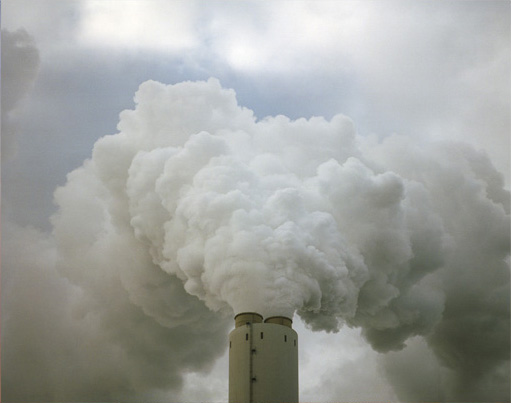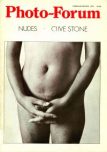John B Turner reflects on a groundbreaking 1976 survey of institutional attitudes toward the collection and exhibition of photography in New Zealand and asks how much has changed.
1976
The State of New Zealand Photography

In 1976, two years after PhotoForum was founded, and following The Active Eye survey of contemporary photography, Ted Quinn set out to document the state of photography as an art in New Zealand.
What he found was ignorance, outright dismissal, and confusion. But there was also enthusiasm in the air and positive signs of a growing interest in the medium, among the quiet cries for help from organisations keen to do something but unsure about what to do or how to do it.
Private collectors were virtually nonexistent and almost nobody thought of buying a photograph.
One arts centre didn’t know if there was enough interest in photography to make it worthwhile holding shows, and more than one dealer claimed that photography was not an art and would not be shown by them.
The Auckland Art Gallery had only recently started its photography collection and our National Art Gallery said they had neither a photographic collection, nor intentions regarding photography.
The Govett-Brewster Gallery, now the foremost promoter of contemporary art, was thinking of collecting historical work, and the John Leech Gallery, now a leader in selling historical photography, said they only dealt with original works of art.
Almost hidden in PhotoForum’s web archive, Ted Quinn’s snapshot of the time is well worth revisiting as a reminder of how much has changed in the New Zealand art scene in regard to the acceptance of photography as art and social document. New Zealand’s universities and polytechnics, starting in the mid-1960s have nurtured influential teachers, who in turn spread their knowledge and enthusiasm throughout secondary and tertiary education.
PhotoForum, nearing its 40th birthday, had a role to play as an independent observer and catalyst for change relating to issues documented and discussed by Ted Quinn. Ted, like many PhotoForum activists was then a photography student at the Elam School of Fine Arts. His enthusiasm and prolific output as assistant editor of PhotoForum magazine and our tabloid PhotoForum Supplement’s warranted him the title of Research Secretary. And he carried out his job with imagination and prodigious energy. A peer of John Reynolds and George Baloghy, with whom he exhibited outside of Elam, he later became a photo therapist in England and editor of a magazine for the profession. Trying to contact him to contribute to our documentation of PhotoForum at 40, however, has so far been what Eric Lee-Johnson would call “a great unsuccess”. (Please tell us if you know how we can get in touch with Ted.)
Some of the public art galleries, museums, libraries and private galleries would have changed their name, been subsumed into another branch or organisation, or disappeared altogether. That is particularly so for the small, enthusiastic, underfunded photo galleries that flourished and for a brief time, helped to change the climate for taking photography more seriously than hitherto. We can’t say much for the 50% of canvassed organisations that did not respond to Ted’s survey, but we did know that raised some embarrassing questions about why photography was being neglected by those who should have known better.
What we can say, however, is that along with the advances that came when the National Art Gallery started collecting contemporary photography under Andrew Drummond, and it’s new Director, Luit Bieringa (who was instrumental in creating The Active Eye survey of contemporary NZ photography in 1975), there has been some backsliding from some prominent public institutions as well as great advances by others.
The Auckland Art Gallery, in particular, has seldom fulfilled its promise. And no New Zealand public gallery has established a permanent display space to highlight photography and provide students and teachers with a living resource of exemplary works from the histories of photography.
The absence of such an obvious educational service was pointed out in by the late Van Deren Coke, visiting Fulbright scholar in 1989, and later Director of Photography at the San Francisco Museum of Modern Art, but Auckland’s showcase gallery, now expanded and refurbished, still tends to sit on its hands in regard to properly showcasing New Zealand’s best photographers.
Ted Quinn’s survey is also a reminder of how much more can and should be done by those responsible for preserving and promoting New Zealand’s history, culture and heritage. And that should concern all New Zealanders.
Crucial decisions have to be made to properly resource our public institutions so they can carry out their duty of care. As John Miller and Reg Feuz have highlighted for PhotoForum, and I know from my own experience of trying to place major collections of photographs in safe hands, there is a huge log-jam of priceless private collections that now need the attention of curators, librarians and conservation specialists, if they are not to be lost. We need the people responsible for deciding which collections and how much of them must be preserved for the future to stand up and explain what they are doing, or need support to do?
Merely paying big money – the penalty for neglect – for a few star works that should have been collected before “the market” paid attention and upped the ante, is not enough.
They might not be perfect, but the curators we now have – and we could do with more of them – need to be given more freedom to roam and cogitate. Our dedicated private art dealers often provide exceptional service, but they can only do so much, and our public collectors need to rely less on them to seek significant work at its source, as early as possible.
That would be risky, of course, but freed from the dealer’s ring fencing, and institutional committees who too often don’t understand much about photography, the odds are very much in favour of a conscientious curator being able to acquire significant cultural artifacts wholesale from the many practitioners without a dealer, or discounted through collaboration with dealers.
What most serious photographers need when they are getting into their stride, or approaching completion of a body of work, is sufficient funds to pay for their art and living expenses so they can get on with doing what they do best, or branch out into new territory if that’s what they need to do.
What wealthy art collectors do with their disposable income is their own business. But our public art servants could save money as well as spread support if they were freed to get ahead of the game and buy significant work when it is relatively fresh and unknown. That’s what the best collectors have always done.
Knowing they have representative highlights in the bag, as it were, would do much to remove the belated pressure that builds up after years of institutional neglect, or undervaluation of an artist’s work, and forces competition with private buyers and competing institutions also trying to catch up. Having already acquired significant works, our public institutions could free themselves from the guilt-laden pressure of seriously overdue purchases at indecently inflated prices.
The high prices paid at auction for some works are simply ridiculous, and the really big retrospective purchases do more to inflate ego or depression than swell the artist’s bank account. Exorbitant fees and increased insurance cover should be seen for what they usually are: a premium on neglect. The purchase of overpriced works by art stars like Andreas Gursky, is indicative of the cultural blue-chip cringe favoured by PR-focussed galleries, and further highlights the neglect of New Zealand photography by them.
It’s an old grizzle, but I still hear from some of New Zealand’s best artists that none of the people responsible for public acquisitions have ever visited them to see work before (and if) it is exhibited.
If our public art servants were empowered to do the rounds, and had discretionary funds to follow their intuitions, many a bargain of mutual benefit to practitioners and institutions could be struck and a better, more relevant public representation of our cultural and social history could be preserved.
John B Turner,
Beijing, China, July 2013.
Ted Quinn: ‘Results of a survey on the State of New Zealand Photography as regards Public and Private Art Galleries, Libraries and Museums’. Photo-Forum Research Supplement, April 1977.
Introduction
This survey was begun in October 1976 with the stated aim of preparing “a brief analysis of the position of photography in New Zealand, and the local gallery interest.”
A list of questions relating to photographic collections, exhibitions, and intentions regarding photography, were sent to 150 public and private museums and galleries, as well as some libraries. View the survey (pdf) here.
POSTSCRIPT 2013
In its June 1981 issue, PhotoForum published an update on Ted Quinn’s survey carried out by Diane Quin and Janneke Vandenberg: ‘On Collectors’, pp 20-23. It included responses from 19 art galleries, museums or libraries and three private collections, those of Hardwicke Knight, William Main and Ron Brownson.
Links:
http://johnbturnerphotography.blogspot.co.nz
http://jbt.photoshelter.com







